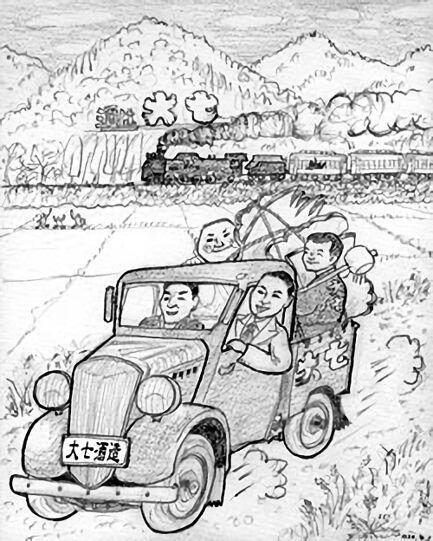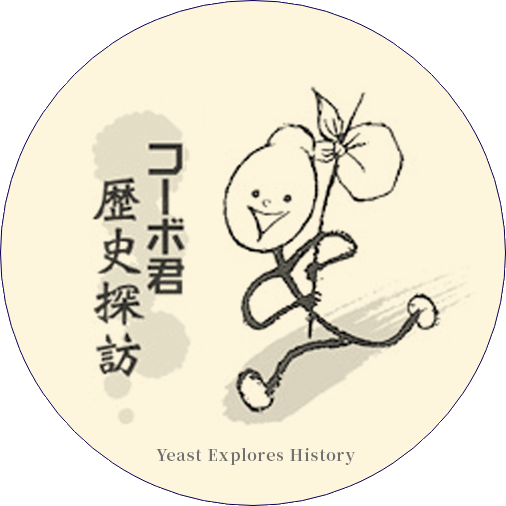| Yeast |
“Old Well! What happened to Daishichi after becoming first in the whole country?” |
| Old Well |
“Hahaha. You’ve become quite excited. But the 8th Generation probably had the same feelings. After winning the first prize at the Japan Sake Awards, Daishichi’s name resounded throughout the country. The whole of Tohoku (the 6 prefectures of Northeastern Japan) formed of course our market, but we also made inroads into the Kansai (the area around Kyoto, Osaka and Kobe), the traditional center of sake production. ‘Everywhere Daishichi gains admiration,’ was written at that time. But ironically Fate was lying in wait. Immediately afterwards, Japan was plunged into the Pacific War. The same year, the National General Mobilization Law was adopted, and from the year after that rice rationing started, so that the volume of sake that could be brewed was reduced to less than half. The dream of the 8th Generation to brew better and better sake was shattered after just one year.” |
| Yeast |
“That was really bad luck, as it was such a good chance!” |
| Old Well |
“But the flame didn’t die. Even in wartime when breweries were bound hand and foot by the new regulations and were forced to brew coarse sake, the 8th Generation stuck to making good sake. Out of his own pocket he stealthily bought black-market rice and also made up for the lack of polishing. Although he had the honor of being the first in Japan, he was forced to take such measures. As soon as the war ended, he revived the kimoto method which he had been forced to give up. He now put his whole heart and soul into it. That was not a light undertaking in a country that had just lost the war and where everyone was poor and where trained brewers were in short supply. That is also clear from the fact that, while breweries employing the kimoto method had still been quite numerous in the years before the war, after the war they had become very rare. Because the only breweries that had preserved the kimoto method were the famous breweries from the Nada district in Hyogo prefecture, the 8th Generation every year visited Nada for study, in order to improve his skills. At that time he was also one of the first to start brewing junmai sake, without added alcohol. Finally Japan recovered bit by bit, and then came the period of high economic growth.” |
| Yeast |
“What effect did that have?” |
| Old Well |
“Japan changed from an agricultural country into an industrial country, and mass production led to a rich surplus of goods. The demand for sake also rose strongly, I remember we producers almost couldn’t keep up with demand. But on the other hand, tradition was abandoned. Even the Nada breweries changed into modern factories that brewed all the year through, and nobody valued the time-consuming kimoto method anymore. Before you knew it, the kimoto method had dwindled to just a few breweries in the whole of Japan.” |
|
 |
| Yeast |
“What did Daishichi do?” |
| Old Well |
“Of course we held fast unto the Kimoto method, putting up a lonely struggle. At the same time, sake brewing expanded in step with the times. Don’t you see that the times are always changing? While preserving what is important, we have to go on living without becoming fossils. The 8th Generation didn’t waste the period of high economic growth, but used the chance to invest in the brewery, laying the foundation for the next leap forward. The traditional kimoto method proved to be a wonderful combination with modern marketing. You know the many large advertising boards with ‘Sake is Daishichi.’ The 8th Generation began setting them up after buying the first Datsun truck in Fukushima in 1938. Several hundreds were put up, showing his progressive spirit. In his turbulent life he was blessed with meeting good people, and he died peacefully at the age of 93. I’d say he led a happy life. “ |





